Buy A New Car
Honda’s Fixed Prices Set to Cause a Stir
After a long time coming, Honda is almost ready to pull the trigger on its plans to move towards an agency model in the Australian new car market from July. For a long time, the brand’s future was subject to speculation as some wondered whether it might follow in the footsteps of Holden and exit the local car market.
Nonetheless, despite its commitment to Australian motorists, not everyone is particularly pleased about how things are about to unfold. Let’s take a look at some of the changes that motorists can expect when the new model comes into effect from mid-year.
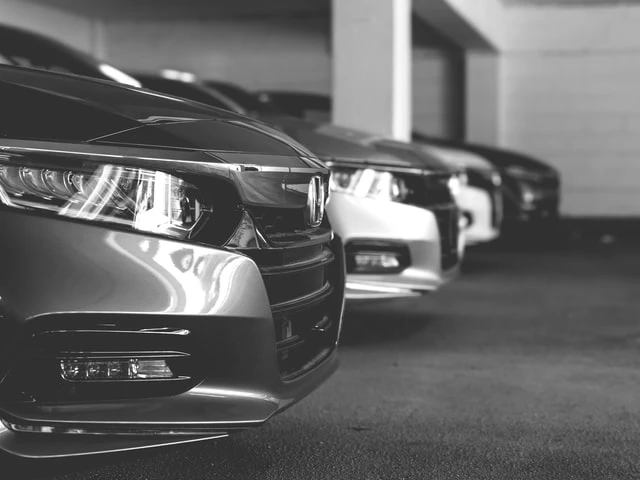
What can new car buyers expect?
As of July 1st, 2021, Honda is slashing dealership numbers and adopting an agency model. To many, this may not mean anything, however, for the dealers involved, the first thing is an expected hit to jobs, particularly given the lower number of showrooms and staffing requirements that ensue.
When you enter a showroom from July 1, you will be dealing with an agent of the Honda company’s head office. So whereas showrooms and dealerships were often operated by separate groups, now you’ll effectively be liaising directly with the parent company, although stock will be held by Honda Australia. Dealer agents will no longer be commission-based, rather, they will earn a fee from the parent company.
Because of these changes, however, prices are set to be fixed. That’s right, you heard it correctly. The days of haggling in a Honda showroom are set to be over, with the brand’s representatives recently even going so far as to say that negotiating the price of a Honda vehicle would no longer be a thing under any circumstances whatsoever.
If that wasn’t enough, new car buyers are also staring at reduced choice when it comes to the number of models available from Honda. The brand has cut its entry-level numbers and is prioritising SUVs, which is in line with the trend favouring SUVs of late.
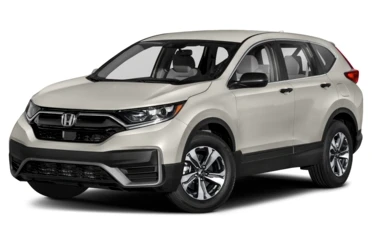
What is the impact of this move?
Aside from the obvious, higher prices and less choice, the story isn’t over for new car buyers. There is also going to be more restricted levels of accessibility when it comes to servicing your Honda, which comes from the fact that a large number of Honda dealerships are set to fall by the wayside.
For Honda, naturally, its margins are expected to increase – and we’re tipping, quite handsomely. However, the brand has also gone on record to say that it not only expects but is ultimately pleased about the prospect that it will sell fewer vehicles across the Australian new car market.
A long-time favourite down under, and with many great names behind it over the years, it’s a shame that motorists now face an outcome where their choice, negotiating power and after-market support are set to be constrained.
Best People Movers for 2021
There are those of us who would rather avoid being seen in what are technically called ‘People Movers’. By choice, they’re not a car that many would prefer over a roadster or GT. However, they do have their place and the current new people movers are stacked with the latest goodies, are comfortable and work hard to make their cabins a pleasant, safe space for plenty of people to spend time journeying in. Of course, the space and comfort throughout a people mover cabin is, generally, superb, making them ideal at doing what they say they will on the tin. So, if you have been particularly virile and require a decent vehicle for moving your large family about, or you just need those extra seats and space, then here are the newest people movers available on the market in 2021:
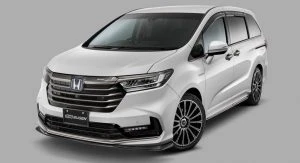
Honda Odyssey
Available in a 2.4-litre ULP, 129 kW, 225 Nm, 7-speed CVT, FWD, combined fuel consumption of around 8-9 litres/100 km, towing 450 kg un-braked and 1000 kg braked, 5-star ANCAP rating, seven seats, Honda Odyssey ViL7 (around $49k) and Honda Odyssey ViLX7 (around $56k), 5 yr/unlimited km warranty.
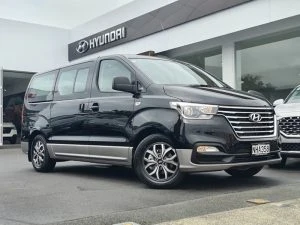
Hyundai iMax
Available in a 2.5-litre Turbo Diesel, 125 kW, 441 Nm, 5-speed automatic, RWD, combined fuel consumption of around 9 litres/100 km, towing 750 kg un-braked and 1500 kg braked, 4-star ANCAP rating, eight seats, Hyundai iMax Active (around $49k) and Hyundai iMax Elite (around $54k), 5 yr/unlimited km warranty with 1yr Roadside assistance.
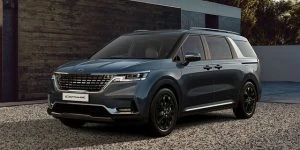
Kia Carnival
Available in a 3.5-litre ULP, 216 kW, 355 Nm, 8-speed automatic, FWD, combined fuel consumption of around 10 litres/100 km, towing 750 kg un-braked and 2000 kg braked, ANCAP rating untested but previous model was 5-star, eight seats, Kia Carnival S (around $51k), Kia Carnival Si (around $56k), Kia Carnival SLi (around $61k), Kia Carnival Platinum (around $68k), 7 yr/unlimited km warranty with 1yr Roadside assistance.
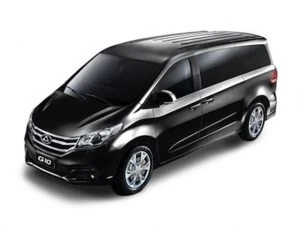
LDV G10
Available in a 1.9-litre Turbo Diesel with 110 kW and 350 Nm or a 2.0-litre ULP with 165 kW and 330 Nm. 6-speed automatic, RWD, combined fuel consumption of around 9 litres/100 km for the Turbo Diesel and 12 litres/100 km for the ULP. Towing 750 kg un-braked and 1750 kg braked for the Turbo Diesel and 750 kg un-braked and 1500 braked for the ULP. 3-star ANCAP rating, seven seats, LDV G10 Turbo Diesel (around $35k) and LDV G10 Executive (around $38k), 3 yr/100,000 km warranty.
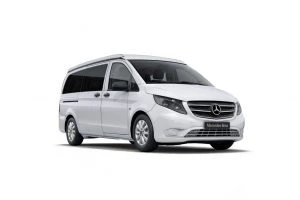
Mercedes-Benz Marco Polo ACTIVITY 220d
Available in a 2.1 Turbo Diesel, 120 kW, 380 Nm, 7-speed automatic, RWD, combined fuel consumption of around 7 litres/100 km, towing 750 kg un-braked and 2500 kg braked, 5-star ANCAP rating, seven seats, Mercedes-Benz Marco Polo ACTIVITY 220d (around $86k), 5 yr/unlimited km warranty and 5 yr roadside assist.
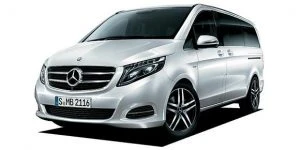
Mercedes-Benz V-Class V220 d
Available in a 2.1 Turbo Diesel, 120 kW, 380 Nm, 7-speed automatic, RWD, combined fuel consumption of around 7 litres/100 km, towing 750 kg un-braked and 2500 kg braked, 5-star ANCAP rating, seven seats, Mercedes-Benz V-Class V220 d (around $94k), Mercedes-Benz V-Class V220 d Avantgarde (around $111k), 5 yr/unlimited km warranty and 5 yr roadside assist.
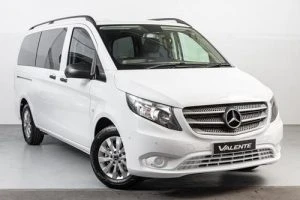
Mercedes-Benz Valente 116CDI
Available in a 2.1 Turbo Diesel, 120 kW, 380 Nm, 7-speed automatic, RWD, combined fuel consumption of around 7 litres/100 km, towing 750 kg un-braked and 2500 kg braked, 5-star ANCAP rating, eight seats, Mercedes-Benz Valente 116CDI (around $72k), 5 yr/250,000 km warranty and 5 yr roadside assist.
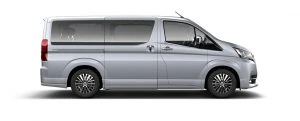
Toyota Granvia
Available in a 2.8-litre Turbo Diesel, 130 kW, 450 Nm, 6-speed automatic, RWD, combined fuel consumption of around 8 litres/100 km, towing 400 kg un-braked and 1500 kg braked, 5-star ANCAP rating, six seats, Toyota Granvia (around $65k) and Toyota Granvia VX (around $76k), 5 yr/unlimited km warranty.
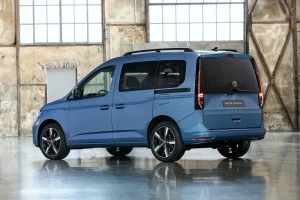
Volkswagen Caddy
Available in a 1.4-litre Premium ULP, 92 kW, 220 Nm, 7-speed automatic, FWD, combined fuel consumption of around 6.5 litres/100 km, towing 630 kg un-braked and 1300 kg braked, 4-star ANCAP rating, 5 or 7 seats, Volkswagen Caddy Trendline 5 seats (around $35k) and Volkswagen Caddy Comfortline 7 seats (around $41k), 5 yr/unlimited km warranty, 1 yr roadside assist.
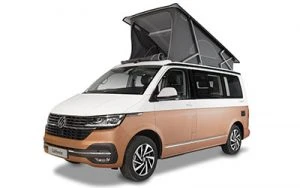
Volkswagen California Beach
Available in a 2.0-litre Turbo Diesel RWD with 110 kW and 340 Nm or a 2.0-litre Twin Turbo Diesel 4WD with 146 kW and 450 Nm. 7-speed automatic, combined fuel consumption of around 7 to 8 litres/100 km, towing 750 kg un-braked and 2500 kg braked, 4-star Euro NCAP rating, 5 or 7 seats, Volkswagen California Beach TDI340 7 seats (around $83k) and Volkswagen California Beach TDI450 4×4 5 seats (around $93k), 5 yr/unlimited km warranty, 1 yr roadside assist.
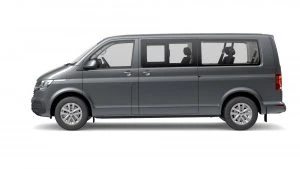
Volkswagen Caravelle TDI340 Trendline
Available in a 2.0-litre Turbo Diesel FWD, 110 kW, 340 Nm, 7-speed automatic, combined fuel consumption of around 7 litres/100 km, towing 750 kg un-braked and 2500 kg braked, 4-star Euro NCAP rating, 9 seats, Volkswagen Caravelle TDI340 Trendline (around $65k) 5 yr/unlimited km warranty, 1 yr roadside assist.
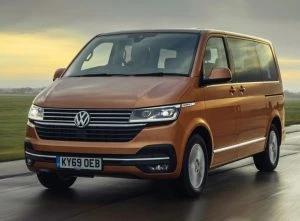
Volkswagen Multivan
Available in a 2.0-litre Turbo Diesel FWD with 110 kW and 340 Nm or a 2.0-litre Twin Turbo Diesel 4WD with 146 kW and 450 Nm. 7-speed automatic, combined fuel consumption of around 7 to 8 litres/100 km, towing 750 kg un-braked and 2500 kg braked, 4-star Euro NCAP rating, 7 seats, Volkswagen Multivan TDI 340 Comfortline (around $62k), Volkswagen Multivan TDI450 Highline (around $85k), Volkswagen Multivan TDI450 Comfortline (around $88k), 5 yr/unlimited km warranty, 1 yr roadside assist.
Korean Teasers: Kia EV6 And Hyundai Kona N
Kia Corporation has revealed the first official images of the EV6 – its first dedicated battery electric vehicle (BEV) built on the company’s new EV platform (Electric-Global Modular Platform or E-GMP). EV6 is also the first of Kia’s next-generation BEVs to be developed under a new design philosophy that embodies Kia’s shifting focus towards electrification. “EV6 is the embodiment of both our brand purpose, ‘Movement that inspires’, and our new design philosophy. It has been designed to inspire every journey by offering an instinctive and natural experience that improves the daily lives of our customers and provide user ownership that is simple, intuitive and integrated,” said Karim Habib, Senior Vice President and Head of Kia Global Design Center. “Our aim is to design the physical experience of our brand and to create bold, original and inventive electric vehicles.”
“EV6 is the embodiment of both our brand purpose, ‘Movement that inspires’, and our new design philosophy. It has been designed to inspire every journey by offering an instinctive and natural experience that improves the daily lives of our customers and provide user ownership that is simple, intuitive and integrated,” said Karim Habib, Senior Vice President and Head of Kia Global Design Center. “Our aim is to design the physical experience of our brand and to create bold, original and inventive electric vehicles.” As part of the company’s brand transition, Kia’s new dedicated battery electric vehicles will be named according to a new naming strategy. The new approach brings simplicity and consistency to Kia’s EV nomenclature across all global markets.
As part of the company’s brand transition, Kia’s new dedicated battery electric vehicles will be named according to a new naming strategy. The new approach brings simplicity and consistency to Kia’s EV nomenclature across all global markets. All of Kia’s new dedicated BEVs will start with the prefix ‘EV’ which makes it easy for consumers to understand which of Kia’s products are fully electric. This is followed by a number which corresponds to the car’s position in the line-up.
All of Kia’s new dedicated BEVs will start with the prefix ‘EV’ which makes it easy for consumers to understand which of Kia’s products are fully electric. This is followed by a number which corresponds to the car’s position in the line-up.
Designed and engineered to embody Kia’s new brand slogan, ‘Movement that inspires’, EV6 will make its world premiere during the first quarter of 2021. Hyundai Motor has revealed a glimpse of the all-new KONA N without its camouflage disguise. In a series of teaser images, fans and enthusiasts can enjoy a first look at the latest member of the brand’s high-performance N range.
Hyundai Motor has revealed a glimpse of the all-new KONA N without its camouflage disguise. In a series of teaser images, fans and enthusiasts can enjoy a first look at the latest member of the brand’s high-performance N range.
The all-new KONA N will be the latest addition to the Hyundai N brand line-up, and the first N model with an SUV body type. As the first images reveal, the ‘hot SUV’ boasts a sporty appearance, further emphasised by its wide, low stance. For the very first time, the Hyundai N division and Hyundai Design Centre worked together to develop on an SUV body type, creating a product that clearly represents a powerful presence and driving fun. The all-new KONA N combines the modern design of the recently launched new KONA with the bold and dynamic language of the company’s N models.
As the first images reveal, the ‘hot SUV’ boasts a sporty appearance, further emphasised by its wide, low stance. For the very first time, the Hyundai N division and Hyundai Design Centre worked together to develop on an SUV body type, creating a product that clearly represents a powerful presence and driving fun. The all-new KONA N combines the modern design of the recently launched new KONA with the bold and dynamic language of the company’s N models. The front view is dominated by large, sporty and iconic air intakes, and the new light signature gives Hyundai’s latest high-performance model an aggressive, powerful appearance. The lower grille defines the character of the bumper fascia: its shape is inspired by an aeronautic fuselage and extends to the side of the car, emphasising its aerodynamic efficiency and speed. An N logo on the unique upper grille completes the look.
The front view is dominated by large, sporty and iconic air intakes, and the new light signature gives Hyundai’s latest high-performance model an aggressive, powerful appearance. The lower grille defines the character of the bumper fascia: its shape is inspired by an aeronautic fuselage and extends to the side of the car, emphasising its aerodynamic efficiency and speed. An N logo on the unique upper grille completes the look.
At the rear, a large double-wing roof spoiler for enhanced downforce gives spice to the rear view. It also incorporates a third, triangular brake light, as is customary with N models. Large N dual exhaust mufflers fully express the model’s high-performance spirit. Lower down on the rear bumper, a large diffuser enhances the airflow departure. The sporty appearance is further emphasised through body-coloured fenders, bringing KONA N visually closer to the ground.
Large N dual exhaust mufflers fully express the model’s high-performance spirit. Lower down on the rear bumper, a large diffuser enhances the airflow departure. The sporty appearance is further emphasised through body-coloured fenders, bringing KONA N visually closer to the ground.
The all-new KONA N is equipped with the eye-catching features reserved for N models, such as exclusive alloy wheels and red accents that embellish the side sills.  (Information supplied courtesy of Kia and Hyundai.)
(Information supplied courtesy of Kia and Hyundai.)
FCAI Sees Tunnel’s Light As Sales Increase
The Federal Chamber of Automotive Industries, the FCAI, has released the new vehicle sales figures for February 2021. 83,977 vehicles were sold in February 2021, which is up 5.1 per cent on February 2020. Sales for that month saw 79,940 vehicles sold.
This positive result was reflected in the increases seen for N.S.W., W.A., S.A., QLD, and the N.T. Victoria was down by 8.7%, Tasmania by 3.9%, and the ACT by 38.3% compared to February 2020. Year to date sales of 163,643 vehicles is up 7.9 per cent on the same period in 2020.
SUV sales continued to dominate the market with sales of 42,651 vehicles and representing 50.8 per cent of the total market for February 2021. Light commercial vehicle sales represented 23 per cent (19,326) and passenger vehicles 22.9% (19,194).
On a marque basis, Toyota had a 21.9% market share, Mazda 9.9%, Hyundai 7.4%, equal with Mitsubishi and just ahead of Kia, and Ford on 7.0%, and 5.6%. Nissan clocked 4.6% with fellow Japanese maker Subaru on 3.1%. VW had 3.6 whilst Chinese owned and built MG also saw 3.6%. February sales saw a continued shift in preference by buyers to move away from passenger vehicles. Sales fell 15.3% in February 2021 compared to sales in February 2020. Sales of SUVs were up 8.6 per cent and sales of light commercials were up 24.3 per cent. Hybrid SUVs continue their inexorable climb, with 2,713 sold in February 2021, against 2,546 for the same period last year, and 5,456 from January 1st compared to 4,018 last year. PHEV sales were also up, with 149 and 275 against 92 and 149 on a month and year to date basis.
February sales saw a continued shift in preference by buyers to move away from passenger vehicles. Sales fell 15.3% in February 2021 compared to sales in February 2020. Sales of SUVs were up 8.6 per cent and sales of light commercials were up 24.3 per cent. Hybrid SUVs continue their inexorable climb, with 2,713 sold in February 2021, against 2,546 for the same period last year, and 5,456 from January 1st compared to 4,018 last year. PHEV sales were also up, with 149 and 275 against 92 and 149 on a month and year to date basis.
Toyota’s RAV4 lead the way in the category, with 2,750 against the Mazda CX-5’s 2,048. It was a scrap for third place with Mitsubishi’s Outlander (1,178), Nissan’s X-Trail (1,151), Hyundai’s Tucson (1,062) and Subaru’s Forester (1,009) duking it out. In the large SUV category and at sub-$70K, Toyota’s Prado won comprehensively with 1,407. Isuzu’s MU-X saw 745 sales for 2nd place, edging the outgoing Subaru Outback on 608. FCAI chief executive, Tony Weber, said the result showed that confidence was continuing to grow in the market. “During the past four months we have seen an increase of 10.6% in new vehicles and this has been reflected with strong growth in NSW, Queensland, Western Australia, South Australia and the Northern Territory in February 2021. The sales reduction in Victoria can be attributed to the COVID 19 restrictions that were put in place during the month.“We remain confident that this trend of growth will continue in an environment where business operating conditions continue to normalise.”
FCAI chief executive, Tony Weber, said the result showed that confidence was continuing to grow in the market. “During the past four months we have seen an increase of 10.6% in new vehicles and this has been reflected with strong growth in NSW, Queensland, Western Australia, South Australia and the Northern Territory in February 2021. The sales reduction in Victoria can be attributed to the COVID 19 restrictions that were put in place during the month.“We remain confident that this trend of growth will continue in an environment where business operating conditions continue to normalise.”
Toyota was the leading brand in February with sales of 18,375 vehicles (21.9 per cent of the market), followed by Mazda with 8,322 (9.9 per cent), Hyundai with 6,252 (7.4 per cent), Mitsubishi with 6,202 (7.4 per cent) and Kia with 5,871 (7 per cent).
The Toyota Hilux was the best-selling vehicle in February 2021 with sales of 4,808 vehicles, followed by the Ford Ranger (2,900), the Toyota RAV4 (2,750), the Toyota Landcruiser (2,521) and the Toyota Corolla (2,427).
Kia’s revamped Carnival continued to dominate the People Mover sub-$60K segment, with 606 sales for a massive 62.5% market share, with Honda’s Odyssey on just 127. Mercedes-Benz listed 28 in the plus-$60K market for the V-Class. Purely electric passenger vehicles have seen a mild increase, with 119 for February 2021 against 86 for the same time in 2020. It’s the same on a YTD basis with 197 to 165 for 2020. For the electric SUV segment, it was a better result, with 139 to 60 for a month comparison, and 352 to 97 on a YTD basis.
Purely electric passenger vehicles have seen a mild increase, with 119 for February 2021 against 86 for the same time in 2020. It’s the same on a YTD basis with 197 to 165 for 2020. For the electric SUV segment, it was a better result, with 139 to 60 for a month comparison, and 352 to 97 on a YTD basis. Key Points:
Key Points:
• The February 2021 market of 83,977 new vehicle sales is an increase of 4,037 vehicle sales or 5.1% on February 2020 (79,940) vehicle sales. February 2020 and February 2021 each had 24 selling days and this resulted in an increase of 168.2 vehicle sales per day.
• The Passenger Vehicle Market is down by 3,466 vehicle sales (-15.3%) over the same month last year; the Sports Utility Market is up by 3,378 vehicle sales
(8.6%); the Light Commercial Market is up by 3,784 vehicle sales (24.3%); and the Heavy Commercial Vehicle Market is up by 341 vehicle sales (13.8%) versus
February 2020.
• Toyota was market leader in February, followed by Mazda and Hyundai. Toyota led Mazda with a margin of 10,053 vehicle sales and 12.0 market share points.
(Information courtesy of FCAI)